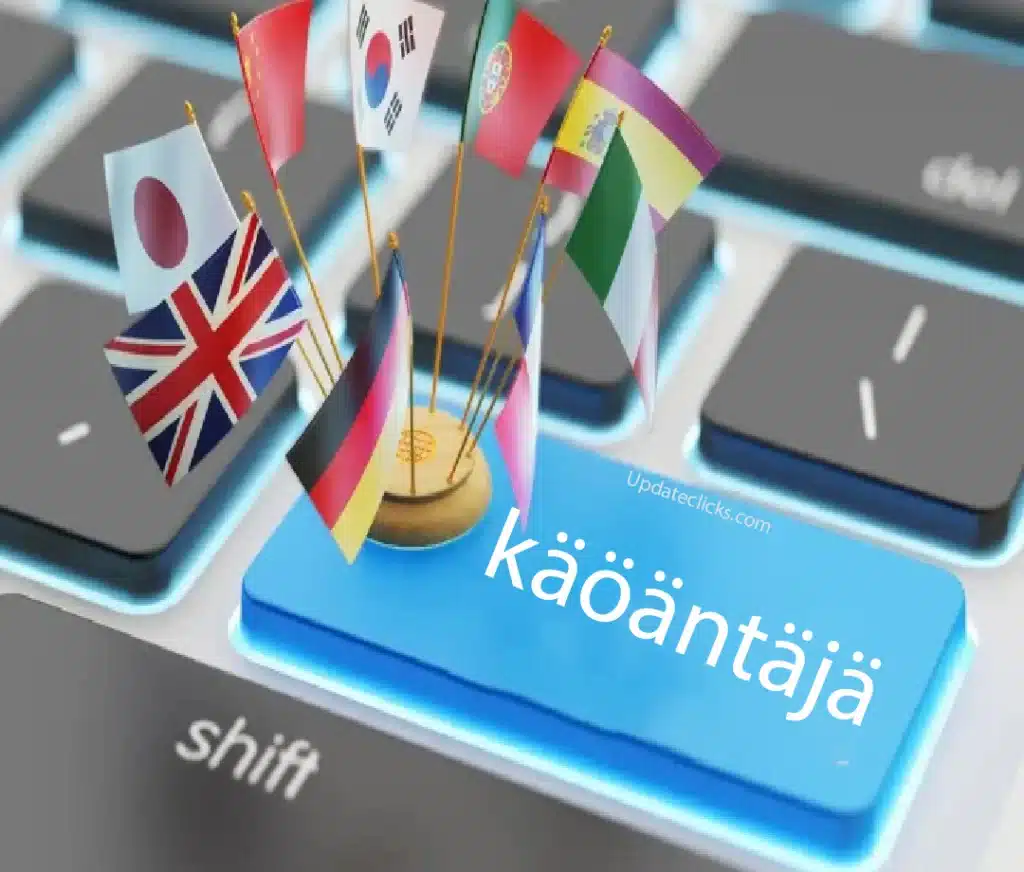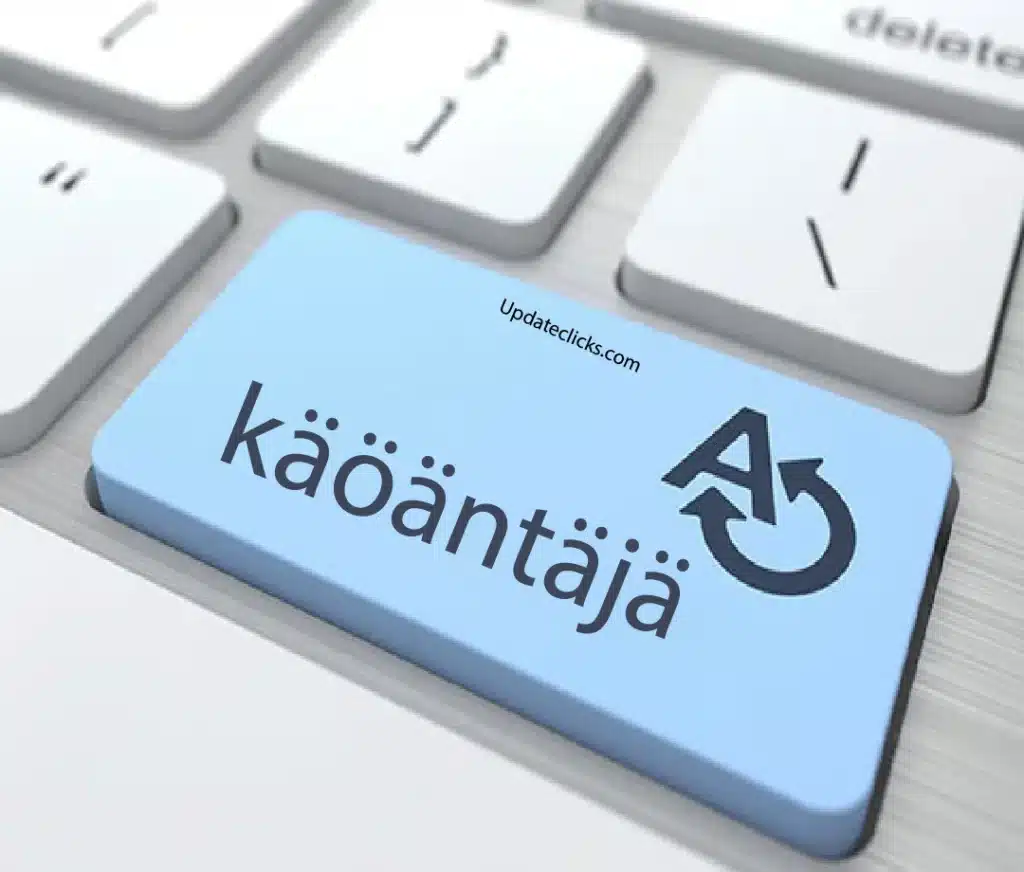
Have you ever come across a foreign document and wondered, “How can I understand this?” Enter käöäntäjä, the Finnish term for “translator.” Translation services have become an integral part of our globalized world, bridging communication gaps and enabling cross-cultural interactions. Whether you’re a business professional needing to negotiate with overseas clients or a traveler trying to read a local menu, translation services are indispensable.
History of Translation Services
Translation services, known as käöäntäjä in Finnish, have a rich history that spans centuries. The practice of translating languages is almost as old as language itself. It began with the need for communication among diverse linguistic groups, especially for trade, diplomacy, and religious purposes.
Early Beginnings
In ancient times, translation was an essential skill for scribes, priests, and scholars. Notable early translations include the Rosetta Stone, which featured the same text in Egyptian hieroglyphs, Demotic script, and Greek. This stone was crucial in deciphering Egyptian hieroglyphs and is a testament to the long-standing human effort to bridge language barriers.
Evolution with Technology
Translation underwent a radical change with the invention of the printing press in the fifteenth century, which standardized languages and increased accessibility to writings. Translators like Martin Luther, who translated the Bible into German, played pivotal roles in shaping modern languages and making literature accessible to a broader audience.
In the 20th century, technological advancements began to shape the translation industry. The advent of typewriters and subsequently computers led to a notable improvement in translation efficiency and precision. The introduction of the internet and digital tools further transformed the field, allowing for instant access to vast resources and enabling real-time communication.
Modern Translation Services
Today, translation services have reached unprecedented levels of sophistication with the integration of artificial intelligence (AI) and machine learning. AI-driven translation tools, such as neural machine translation systems, have improved the accuracy and fluency of automated translations. These advancements are especially useful in handling large volumes of text quickly and efficiently.
Future Prospects
Translation services appear to have a bright future as long as technology keeps developing. Emerging trends include more personalized and context-aware translation systems, as well as innovative applications like augmented reality (AR) translation devices. These technologies promise to further reduce language barriers and enhance global communication.

Understanding Käöäntäjä
So, what exactly is käöäntäjä? At its core, a käöäntäjä is a tool or service that converts text from one language to another. This can be done through human translators, machine translators, or a combination of both. The goal is to maintain the original meaning, tone, and context of the source material in the target language.
Types of Käöäntäjä
There are several types of käöäntäjä:
Human Translators: These are professionals who manually translate text. They are highly skilled in understanding linguistic nuances and cultural contexts, making them ideal for complex or sensitive documents.
Machine Translators: These use algorithms to translate text. While they are fast and cost-effective, they may struggle with idiomatic expressions and cultural subtleties.
Hybrid Systems: These combine the strengths of human and machine translators, using algorithms for initial translations and human translators for refinement.
Advantages of Using Käöäntäjä
Using a käöäntäjä offers numerous benefits:
Accuracy and Precision: Human translators, in particular, provide highly accurate translations by considering context and nuances.
Speed and Efficiency: Machine translators can process large volumes of text quickly, making them suitable for urgent projects.
Cost-Effectiveness: Automated systems can significantly reduce the cost of translation services, especially for routine tasks.
Challenges in Translation
However, translation is not without its challenges. Linguistic nuances, such as idioms and slang, can be difficult to translate accurately. Cultural contexts also play a crucial role; a phrase that is acceptable in one culture might be offensive in another. Additionally, technical limitations of machine translators can lead to errors, especially in specialized fields like medicine or law.
Technological Advancements in Käöäntäjä
The field of translation has seen remarkable technological advancements. Artificial intelligence (AI) and machine learning are at the forefront, enabling more accurate and context-aware translations. Neural networks, which mimic the human brain, have enhanced the capabilities of machine translators. Real-time translation tools, such as those embedded in messaging apps, are becoming increasingly popular, breaking down language barriers instantaneously.
Popular Translation Software and Tools
Several translation tools have become household names:
Google Translate: Known for its broad language support and ease of use, it provides both text and voice translation.
DeepL: Renowned for its accuracy, particularly in European languages.
Microsoft Translator: Offers a wide range of features, including offline translation and integration with Microsoft Office.
Applications of Käöäntäjä in Various Industries
Translation services are crucial in many sectors:
Healthcare: Ensuring accurate communication between patients and healthcare providers is vital.
Legal: Accurate translation of legal documents is essential to avoid misunderstandings.
Education: Educational materials need to be accessible to non-native speakers.
Business: Companies expanding globally require translation services for marketing, contracts, and customer support.
Future of Translation Services
What does the future hold for käöäntäjä? Emerging trends include more advanced AI-driven translations, greater customization, and improved real-time capabilities. Innovations such as augmented reality (AR) translation glasses are on the horizon, promising to make language barriers virtually disappear.
How to Choose the Right Käöäntäjä
Selecting the right translation service depends on your needs Take into account the text’s intricacy, the significance of cultural quirks, and your financial constraints. Evaluating user reviews and feedback can also help you make an informed decision.
Tips for Effective Translation
For effective translation, it’s important to:
Understand the Source Language: A deep understanding of the source language ensures accuracy.
Contextual Translation: Translate ideas, not just words, to maintain the original meaning.
Proofreading and Editing: Always review translations to catch errors and ensure quality.
Case Studies of Successful Translation Projects
Think about translating technical documents for a global corporation. Human translators ensured the manuals were accurate and culturally appropriate for each market, leading to smoother operations and higher customer satisfaction. In another case, a global NGO used a hybrid system to translate educational materials, combining the speed of machines with the accuracy of human translators.
Common Misconceptions about Translation Services
Translation services, often referred to as käöäntäjä in Finnish, play a crucial role in facilitating communication across languages. However, there are several common misconceptions about these services that warrant clarification.
Myth: Machine Translation Can Replace Human Translators Completely
While machine translation has made significant strides in recent years, it cannot entirely replace the expertise and nuance provided by human translators. Machines may struggle with context, idiomatic expressions, and cultural nuances, leading to inaccuracies in translations. Human translators possess the ability to understand the subtleties of language and culture, ensuring more accurate and contextually appropriate translations.
Myth: Translation is a One-Size-Fits-All Service
Effective translation requires customization and consideration of the target audience. Different documents and contexts demand varying levels of formality, tone, and cultural sensitivity. A one-size-fits-all approach to translation overlooks these nuances and can result in miscommunication or misunderstanding. Professional translators tailor their services to meet the specific needs of each project, ensuring the accuracy and effectiveness of the translation.
Myth: Translation Services Are Expensive and Time-Consuming
While professional translation services may require an investment, they offer value in terms of accuracy, quality, and efficiency. Automated machine translation tools are available for free or at a low cost, but they may sacrifice accuracy for speed. Professional translators provide a higher level of accuracy and ensure that translations are culturally appropriate and contextually relevant. Additionally, advancements in technology have streamlined the translation process, reducing turnaround times and increasing efficiency.
Myth: Translation Services Are Only Necessary for Written Texts
While written translation is a common application of translation services, they extend far beyond written documents. Translation services are essential for oral communication, including interpretation during meetings, conferences, and interviews. Professional interpreters facilitate real-time communication between individuals who speak different languages, ensuring that messages are accurately conveyed. In today’s globalized world, oral translation services are indispensable for international business, diplomacy, and cross-cultural communication.
Myth: Anyone Bilingual Can Provide Accurate Translation
While bilingualism is a valuable skill, it does not necessarily equate to expertise in translation. Professional translators undergo rigorous training and possess specialized knowledge in linguistics, cultural studies, and translation theory. They understand the complexities of language and the importance of maintaining the integrity of the original message while conveying it accurately in the target language. Translation requires more than just fluency in two languages; it demands a deep understanding of language, culture, and context.
Conclusion
In conclusion, käöäntäjä, or translators, play a vital role in our interconnected world. They help bridge language gaps, facilitate communication, and foster understanding across cultures. Whether through human expertise or technological advancements, translation services are essential in many aspects of our lives. As we look to the future, the continuous evolution of translation technology promises even more seamless and accurate communication.
Unique Questions Answers about käöäntäjä
What is Käöäntäjä?
The Finnish word “translator,” käöäntäjä, refers to devices or services that translate text between languages.
How accurate are machine translators?
Machine translators have improved significantly but still struggle with idiomatic expressions and cultural nuances. They are best used for general or less complex translations.
Can translation services handle technical documents?
Yes, but it’s often best to use human translators or hybrid systems for technical documents to ensure accuracy and context-appropriate translations.
How do I ensure my translation is culturally appropriate?
Using professional human translators who understand the cultural context of both the source and target languages can help ensure cultural appropriateness.
What are the prices for hiring a professional translator?
The intricacy, volume, and urgency of the translation all affect how much it will cost. Machine translations are generally cheaper, while professional human translations are more expensive but offer higher accuracy and quality.